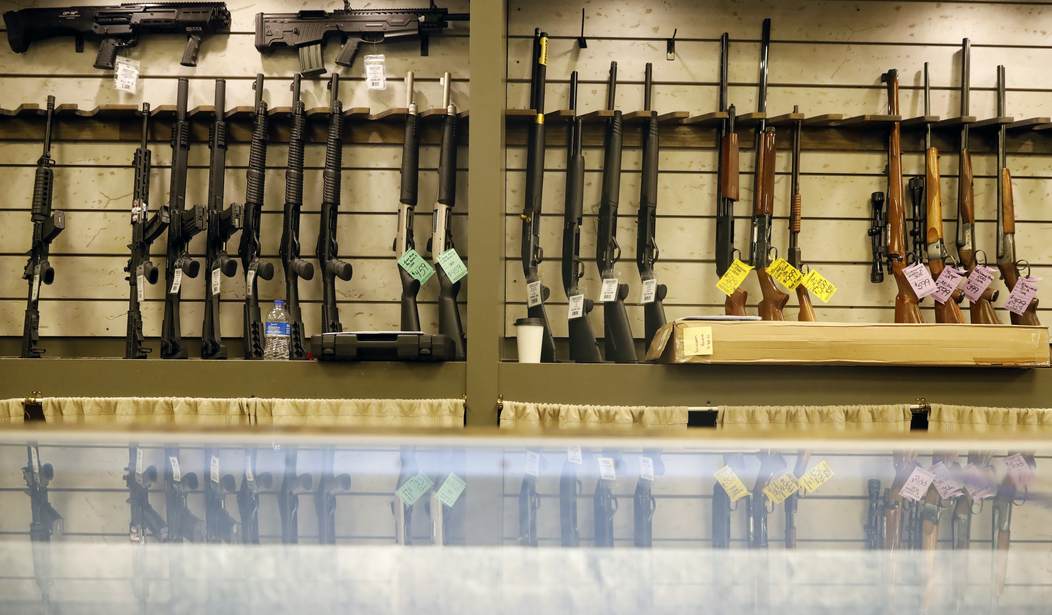A CNN opinion columnist recently revealed she knows as much about the gun issue as Alec Baldwin does about gun safety (too soon?). Author Jennifer Tucker recently published a piece titled “Now that guns can kill hundreds in minutes, Supreme Court should rethink the rights question,” in which she argued that the types of firearms one could carry should be limited even further.
In the piece, Tucker referred to the “Theoretical Lethality Index” (TLI), which was developed by a U.S. Army colonel named Trevor Dupuy, who conducted a study in 1964 to examine the effectiveness of various weapons. The study produced a table in which various weapons are ranked by how many strikes can they can achieve in an hour. For instance, a mid-19th century rifle could strike 102 times while a World War II-era machine gun could strike 3,463 times, making it the more lethal weapon.
Tucker seems to indicate that certain guns like the AR15 have the potential to be exceedingly lethal firearms. She writes:
In the 20th century, bullets became smaller and lighter, enabling soldiers to carry more, while design changes increased the damage they caused upon entering the human body. Today, the highly popular civilian AR-15 is a vastly different and substantially more lethal machine than the flintlock muskets that were in use when the Founders crafted the Second Amendment.
The author continues, recalling the tragic Las Vegas shooting which occurred in 2017 when a gunman murdered 58 people and injured 850 others within a span of 10 minutes. “This would have been physically impossible for a single shooter to do in 1791,” she writes.
Then, she makes an argument typical of anti-gunners: The Founding Fathers did not anticipate the evolution of weapons. She argues:
If the Constitution had been written in the 1880s instead of the 1780s, the Framers would have been much more aware of the pace of innovation. The Founders lived in an era when they could be forgiven for thinking that “a gun is a gun is a gun,” because — as the TLI shows — the killing power of the basic flintlock hadn’t changed in the previous 150 or so years. Dramatic changes occurred, however, during and after the Civil War.
The author insists that “given the rapid technological change we’ve seen in firearms over the last century and a half, the notion that guns should be viewed equally across all times and places is logically flawed.”
She goes on to contend that “just as courts don’t regard the bleeding and purging of patients as the gold standards of health care … “common sense dictates that the law must take into account technological change in firearms.”
Her overall point can be summed up in this statement:
There is room for looking at the lethality of modern firearms when considering the constitutionality of gun regulation. The court implicitly acknowledged this in its Heller decision when it stated that machine gun bans were acceptable. It’s a difficult concession to explain unless the court is considering the modern capabilities of firearms outside of the historical scope of regulation.
The Supreme Court is set to adjudicate what could be a landmark case when it comes to gun rights. The judges will review New York Rifle & Pistol Association vs. Bruen, which is a case targeting New York’s gun licensing scheme. The plaintiffs allege that the state’s approach to deciding who is allowed to possess a license to carry a firearm violates the Second Amendment.
In her piece, Tucker argues:
Weapons designed with an ever-increasing capacity to kill large numbers of people in battle, with long barrels and large-capacity magazines, have no place in public spaces, supermarkets, and shopping malls — not on the grounds of a generic right to self-defense. When it takes up this new gun case, the Court should take technological innovation into account and acknowledge that guns are now exponentially more lethal than they were when the Constitution was written.
We’ve heard these arguments before, haven’t we?
Let’s start with the Founding Fathers argument. She may or may not be correct when arguing that they could not have foreseen the technological advances that led to modern-day firearms. But they were concerned more with one’s right to oppose a tyrannical government if it became necessary. If this was one of their primary motivators in crafting the Second Amendment, it would be common sense to assume they believed the average citizen should be allowed to own weapons that are on par with that of the government.
It would make absolutely no sense to argue that the founders believed Americans should have to be relegated to weapons far inferior to that of the government that could decide to oppress them. Indeed, as it stands currently, the state already has far superior weaponry than most average citizens. We don’t all have tanks and fighter jets, do we?
But what about the mass shooting argument?
Yes, in this day and age, there is the unfortunate reality that even the weapons we are allowed to have can kill a lot more people in a shorter amount of time than a musket could back in the 18th century. But this was inevitable. Firearms were always going to evolve as time went on.
However, people like Tucker fail to realize that imposing laws making it more difficult for responsible Americans to obtain and own firearms does not decrease the likelihood that a crazed individual would carry a mass shooting. Whenever one of these tragedies occurs, the left pushes its gun control narrative. But when people like myself ask: “What law could have prevented this shooting?” the anti-gun people can’t seem to come up with an answer.
Moreover, making it harder for responsible individuals to own firearms only puts them in further danger. As horrible as mass shootings are, it is far more likely that an individual will be placed in a situation in which they have to use a gun to defend themselves than to be shot in one of these incidents. A groundbreaking study conducted by Dr. Gary Kleck of Florida State University found that there are approximately 2.1 to 2.5 million instances per year in which a person uses a gun to defend themselves.
The vast majority of these cases never make the news because they don’t involve actually firing the gun. Brandishing a firearm to scare away a would-be attacker is considered a defensive gun use (DGU) even if the trigger is not pulled. Given these numbers, how many more violent crimes would have been committed if these individuals were not armed? It could easily be far more than are killed in mass shootings.
It is also worth noting that the banning of scary-looking “assault rifles” would do nothing to save lives. The vast majority of mass shooters carry out their attacks using handguns, not rifles. The effort to ban certain types of long guns is not rooted in a desire to save lives. It is rooted in a desire to make people feel good.
As it stands now, the pro-gun crowd is winning the battle over the Second Amendment. A record number of people are buying guns, and many are first-time gun owners like myself. Well, technically, I just bought another gun a few weeks ago, so I’m not a first-timer anymore – but the fact remains.
However, this does not mean the anti-gun lobby isn’t still scheming about how they can further limit your ability to possess firearms. They, like Tucker, are still hoping to use disinformation to con the public into giving up more of their rights. If we don’t continue pushing back and educating about gun ownership, we could get to the point where many of us might need to have “boating accidents.”













